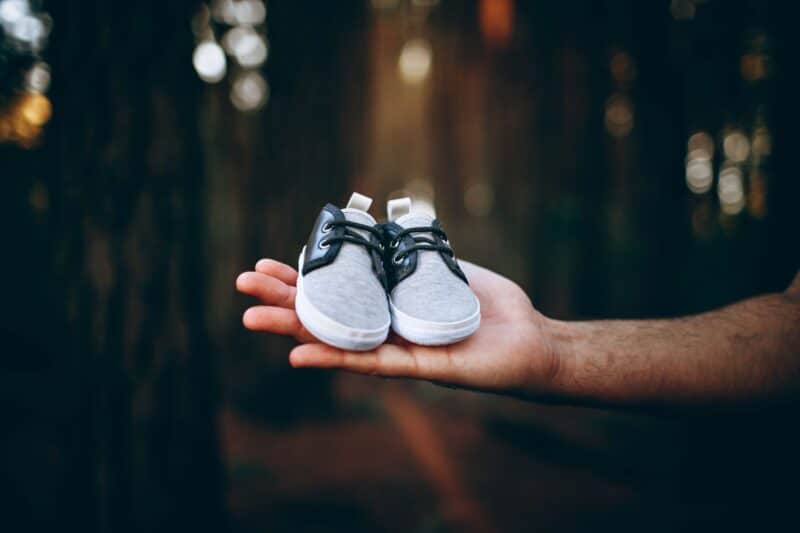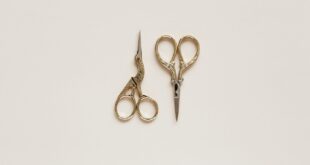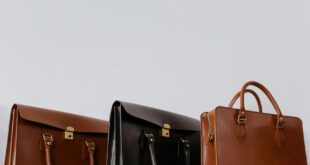Taking Their First Steps: A Comprehensive Guide to First Walkers for Babies – Nurturing confident little explorers.
Taking Their First Steps: A Comprehensive Guide to First Walkers for Babies is a comprehensive resource designed to provide parents with valuable information and guidance on the exciting milestone of their baby’s first steps. This guide covers various aspects of first walkers, including when to expect this developmental milestone, how to encourage and support your baby’s walking journey, and important safety considerations. Whether you’re a first-time parent or have experienced this stage before, this guide aims to equip you with the knowledge and tools necessary to navigate this significant phase in your baby’s growth and development.
The Importance of Baby’s First Shoes: A Guide for Parents
Taking Their First Steps: A Comprehensive Guide to First Walkers for Babies
The Importance of Baby’s First Shoes: A Guide for Parents
As a parent, there are so many exciting milestones to look forward to with your baby. One of the most memorable and significant moments is when they take their first steps. It’s a moment that fills your heart with joy and pride, but it also comes with a new set of challenges. One of these challenges is finding the perfect pair of shoes for your little one. In this guide, we will explore the importance of baby’s first shoes and provide you with some helpful tips on how to choose the right ones.
When it comes to baby’s first shoes, many parents wonder if they are really necessary. After all, babies have been walking barefoot for centuries, right? While it’s true that barefoot walking has its benefits, there are several reasons why investing in a good pair of first walkers is important.
First and foremost, baby’s feet are still developing and are extremely delicate. The right pair of shoes can provide the necessary support and protection for their growing feet. Shoes with a soft, flexible sole and a wide toe box allow for natural movement and help to prevent any potential foot problems down the line.
Another reason why baby’s first shoes are important is that they can help with balance and stability. As your little one takes their first steps, they will need shoes that provide a good grip and prevent slipping. Look for shoes with a non-slip sole and a secure closure system, such as Velcro or laces, to ensure a snug fit.
Choosing the right size is crucial when it comes to baby’s first shoes. Babies’ feet grow rapidly, so it’s important to measure their feet regularly and choose shoes that allow for growth. Avoid buying shoes that are too tight or too loose, as they can cause discomfort and hinder proper foot development.
When shopping for baby’s first shoes, it’s also important to consider the materials used. Look for shoes made from breathable materials, such as leather or mesh, to keep your baby’s feet cool and dry. Avoid shoes with stiff or rigid materials that can restrict movement and cause discomfort.
Now that you understand the importance of baby’s first shoes, let’s talk about some tips for choosing the right ones. First and foremost, make sure to visit a reputable shoe store that specializes in children’s footwear. The staff will be knowledgeable and can help you find the perfect pair for your little one.
When trying on shoes, pay attention to how they fit. The shoes should be snug but not too tight, with enough room for your baby’s toes to wiggle freely. Watch for any signs of discomfort or irritation, such as redness or blisters, as these indicate that the shoes are not the right fit.
Lastly, don’t forget to consider your baby’s preferences. Some babies may prefer shoes with a certain closure system or a specific design. Let your little one explore and interact with the shoes to see which ones they feel most comfortable in.
In conclusion, baby’s first shoes are an important investment for their growing feet. They provide support, protection, and stability during this exciting milestone of learning to walk. By choosing the right size, materials, and fit, you can ensure that your baby’s first shoes are comfortable and promote healthy foot development. So, get ready to capture those precious first steps and watch your little one explore the world with confidence!
How to Choose the Perfect Pair of Shoes for Your Toddler
Are you a parent eagerly awaiting the moment when your little one takes their first steps? It’s an exciting milestone that marks the beginning of a new chapter in your child’s life. As your baby starts to explore the world on their own two feet, it’s important to ensure they have the right footwear to support their growing feet and provide them with comfort and stability. In this comprehensive guide, we will walk you through everything you need to know about choosing the perfect pair of shoes for your toddler.
First and foremost, it’s crucial to understand that babies do not need shoes until they are walking confidently outdoors. Before that, it’s best to let them go barefoot or wear soft-soled shoes or socks to allow their feet to develop naturally. When the time comes to introduce shoes, there are several factors to consider.
The first consideration is the fit of the shoes. It’s essential to choose shoes that are the right size for your child’s feet. Ill-fitting shoes can cause discomfort and hinder proper foot development. To ensure a proper fit, measure your child’s feet regularly, as their size can change rapidly during this stage. Look for shoes with a wide toe box that allows room for their toes to wiggle and grow. Additionally, make sure the shoes have a secure closure system, such as Velcro or laces, to keep them in place.
Next, consider the material of the shoes. Opt for shoes made from breathable materials, such as leather or mesh, to prevent excessive sweating and discomfort. Avoid shoes made from synthetic materials that can trap moisture and lead to fungal infections. Additionally, choose shoes with flexible soles that allow for natural foot movement. Bend the shoes in your hands to ensure they are not too stiff.
Another important factor to consider is the shoe’s support and cushioning. Look for shoes with a cushioned insole and adequate arch support to provide comfort and stability for your toddler’s developing feet. Avoid shoes with high heels or excessive padding, as they can disrupt your child’s natural gait and balance.
When it comes to style, it’s tempting to choose shoes based on their appearance alone. However, it’s important to prioritize function over fashion. While cute and trendy shoes may be appealing, they may not necessarily provide the necessary support and comfort for your child’s feet. Focus on finding shoes that meet the criteria mentioned above, and then consider the style options within those parameters.
Lastly, don’t forget to involve your child in the shoe selection process. Let them try on different pairs and observe how they walk and move in each one. Pay attention to their comfort level and any signs of discomfort or irritation. Remember, your child’s feedback is crucial in finding the perfect pair of shoes for them.
In conclusion, choosing the perfect pair of shoes for your toddler is an important decision that requires careful consideration. Focus on finding shoes that fit well, are made from breathable materials, provide support and cushioning, and prioritize function over fashion. Involve your child in the process and pay attention to their comfort and feedback. By following these guidelines, you can ensure that your little one takes their first steps in shoes that support their growing feet and provide them with the comfort and stability they need.
Milestones in a Baby’s Developmental Journey: The First Steps
Taking Their First Steps: A Comprehensive Guide to First Walkers for Babies
As parents, we eagerly await the moment when our little ones take their first steps. It’s a milestone that marks the beginning of their independence and opens up a whole new world of exploration for them. But before they can confidently walk on their own, babies go through a series of developmental stages that prepare them for this exciting journey.
The first steps in a baby’s developmental journey are crucial, and understanding these milestones can help us support and encourage them along the way. So, let’s dive into the world of first walkers and explore the fascinating process of learning to walk.
The journey begins with the pre-walking stage, where babies start to show signs of readiness for walking. During this phase, they may pull themselves up using furniture or crawl on all fours, preparing their muscles for the task ahead. It’s essential to create a safe environment for them to explore and practice their newfound skills.
As babies gain confidence in their ability to stand, they will start cruising along furniture, holding on for support. This stage is an exciting time for both parents and babies, as it shows that they are getting closer to taking those first independent steps. Encouraging them to cruise by placing enticing toys just out of reach can motivate them to move forward.
Once babies have mastered cruising, they will begin to experiment with standing without support. They may take a few wobbly steps while holding onto your fingers or a stable object. This is a crucial phase where their balance and coordination are put to the test. Be there to offer a helping hand and celebrate every small victory along the way.
As babies gain more confidence in their ability to stand and take steps, they will eventually let go and take those first independent strides. These initial steps may be unsteady and short, but they mark a significant milestone in their development. It’s important to create a safe and supportive environment during this stage, removing any potential hazards and providing them with soft surfaces to land on.
During the early stages of walking, babies may still prefer crawling as it feels more secure and familiar to them. It’s essential to be patient and allow them to choose their preferred mode of transportation. Gradually, as they become more comfortable with walking, they will rely less on crawling and more on their newfound skill.
As babies continue to practice and refine their walking skills, they will gradually gain more confidence and stability. They will start to walk longer distances, explore their surroundings, and even attempt to climb stairs. It’s crucial to supervise them closely during this stage and provide them with plenty of opportunities to practice their newfound skill.
Remember, every baby is unique, and they will reach these milestones at their own pace. Some may take their first steps as early as nine months, while others may wait until they are closer to 15 months. It’s important not to compare your baby’s progress to others and instead focus on supporting and encouraging them in their individual journey.
In conclusion, the first steps in a baby’s developmental journey are an exciting and significant milestone. By understanding the various stages they go through, we can provide the necessary support and encouragement to help them take those first independent strides. So, create a safe environment, celebrate every small victory, and enjoy this incredible journey with your little one as they embark on their walking adventure.
Essential Toddler Footwear: What Every Parent Should Know

Taking Their First Steps: A Comprehensive Guide to First Walkers for Babies
Essential Toddler Footwear: What Every Parent Should Know
As a parent, there are countless milestones you eagerly anticipate in your baby’s life. One of the most exciting and memorable moments is when your little one takes their first steps. It’s a significant milestone that marks the beginning of their journey towards independence. But before your baby can start exploring the world on their own two feet, it’s crucial to ensure they have the right footwear to support their developing feet. In this article, we’ll provide you with a comprehensive guide to first walkers for babies, so you can make informed decisions when it comes to choosing the essential toddler footwear.
When it comes to first walkers, comfort is key. Your baby’s feet are still delicate and developing, so it’s important to choose shoes that provide ample support and flexibility. Look for shoes made from soft, breathable materials like leather or canvas. These materials allow your baby’s feet to breathe and prevent excessive sweating, which can lead to discomfort and even skin irritations. Additionally, opt for shoes with a flexible sole that mimics the natural movement of bare feet. This will help your baby develop their balance and coordination as they take their first steps.
Another crucial factor to consider when choosing first walkers is the fit. Babies’ feet grow rapidly, so it’s essential to measure their feet regularly to ensure they’re wearing the correct size. When measuring, make sure to account for both length and width. Shoes that are too tight can restrict proper foot development, while shoes that are too loose can cause tripping hazards. Look for shoes with adjustable closures like Velcro or laces, as they allow for a more customized fit. Remember, a comfortable fit is essential for your baby’s overall foot health and development.
While comfort and fit are paramount, it’s also important to consider the durability of the shoes. Babies are notorious for putting their shoes through rigorous tests, from crawling to exploring every nook and cranny. Look for shoes with reinforced toe caps and sturdy construction to withstand the wear and tear of your baby’s adventures. Additionally, choose shoes with non-slip soles to provide traction and prevent accidents as your little one navigates different surfaces.
As your baby starts taking their first steps, it’s natural to worry about their safety. To ensure their well-being, opt for shoes with ankle support. Ankle support helps stabilize your baby’s feet and reduces the risk of sprains or injuries. Look for shoes with padded collars or high-top designs that provide extra support around the ankle area. This added support will give you peace of mind as your baby explores their newfound mobility.
Lastly, don’t forget to consider the style and design of the shoes. While functionality is crucial, there’s no harm in choosing shoes that are cute and fashionable. After all, your baby’s first walkers will likely be captured in countless photos and videos. Look for shoes that match your baby’s personality and style, whether it’s vibrant colors, fun patterns, or adorable character designs. Remember, the right shoes can make your baby’s first steps even more memorable.
In conclusion, choosing the right first walkers for your baby is a significant decision that can impact their foot health and development. Prioritize comfort, fit, durability, safety, and style when selecting essential toddler footwear. By considering these factors, you can ensure that your little one’s first steps are supported and protected, setting them on the path to a lifetime of healthy foot development.
Supporting Your Baby’s First Steps: The Role of Proper Footwear
Taking Their First Steps: A Comprehensive Guide to First Walkers for Babies
Supporting Your Baby’s First Steps: The Role of Proper Footwear
As your baby starts taking their first steps, it’s an exciting milestone that marks the beginning of their journey towards independence. But as a parent, you want to make sure that you’re doing everything you can to support them during this crucial stage. One important aspect to consider is the role of proper footwear in helping your little one navigate their newfound mobility.
When it comes to choosing the right shoes for your baby’s first steps, there are a few key factors to keep in mind. First and foremost, you want to prioritize comfort. Your baby’s feet are still developing, so it’s important to choose shoes that allow for natural movement and flexibility. Look for soft, breathable materials that won’t constrict their tiny toes.
Another important consideration is the fit of the shoes. Babies’ feet grow rapidly, so it’s crucial to measure their feet regularly and choose shoes that provide enough room for growth. Avoid shoes that are too tight or too loose, as they can hinder your baby’s balance and stability. Opt for shoes with adjustable closures, such as Velcro or laces, that can be easily tightened or loosened as needed.
In addition to comfort and fit, it’s also important to choose shoes that provide adequate support. Look for shoes with a firm yet flexible sole that allows your baby’s feet to grip the ground and maintain stability. Avoid shoes with thick, rigid soles, as they can interfere with your baby’s natural walking motion. Instead, opt for shoes with a lightweight and flexible design that mimics barefoot walking.
When it comes to style, it’s easy to get caught up in the adorable options available for baby shoes. However, it’s important to prioritize function over fashion. While cute designs and trendy colors may be tempting, they should never compromise the comfort and support that your baby needs. Remember, their feet are still developing, and the focus should be on providing them with the best possible foundation for healthy walking.
As your baby starts taking their first steps, it’s also important to remember that they don’t need to wear shoes all the time. In fact, spending time barefoot can be beneficial for their foot development. Walking barefoot allows their feet to strengthen and develop the muscles necessary for balance and coordination. So, whenever it’s safe and appropriate, let your little one explore their surroundings without shoes.
When it comes to choosing the right footwear for your baby’s first steps, it’s always a good idea to consult with a pediatrician or a professional shoe fitter. They can provide valuable guidance and ensure that you’re making the best choices for your baby’s unique needs. Remember, every baby is different, and what works for one may not work for another.
In conclusion, proper footwear plays a crucial role in supporting your baby’s first steps. Prioritize comfort, fit, and support when choosing shoes for your little one. Remember to measure their feet regularly and opt for adjustable closures to accommodate their growing feet. And don’t forget, spending time barefoot is also important for their foot development. With the right shoes and a little bit of guidance, you can help your baby navigate their first steps with confidence and ease.
A Comprehensive Guide to Infant Shoes: From Pre-Walkers to Early Walkers
Taking Their First Steps: A Comprehensive Guide to First Walkers for Babies
As your baby grows and reaches new milestones, one of the most exciting moments is when they take their first steps. It’s a moment that every parent eagerly awaits, and it marks the beginning of a new chapter in your child’s development. But before your little one can start walking confidently, they need the right footwear to support their tiny feet. In this comprehensive guide, we’ll take you through everything you need to know about infant shoes, from pre-walkers to early walkers.
When it comes to pre-walkers, the key is to prioritize comfort and flexibility. At this stage, your baby’s feet are still developing, and they need shoes that allow for natural movement. Look for soft-soled shoes made from breathable materials like cotton or leather. These materials will provide a gentle barrier between your baby’s feet and the ground, while still allowing their feet to flex and move freely. Avoid shoes with hard soles or rigid structures, as they can hinder your baby’s natural foot development.
As your baby starts to take their first steps, it’s time to transition to early walkers. At this stage, your little one needs shoes that offer more support and stability. Look for shoes with a flexible rubber sole that provides traction and grip, helping your baby maintain their balance as they explore their newfound mobility. The shoes should have a secure closure, such as Velcro or laces, to keep them in place and prevent any tripping hazards. Remember to choose shoes that are lightweight and have a roomy toe box to accommodate your baby’s growing feet.
When it comes to sizing, it’s important to measure your baby’s feet regularly. Babies grow quickly, and their shoe size can change in a matter of weeks. To measure your baby’s feet, place them on a piece of paper and trace around them. Measure the length from the heel to the longest toe and add a small amount of extra space for growth. Use this measurement as a guide when selecting the right shoe size for your little one. Remember, it’s better to choose shoes that are slightly too big than too small, as cramped shoes can cause discomfort and hinder your baby’s walking progress.
While it’s tempting to buy adorable shoes for your baby, it’s important to prioritize function over fashion. Choose shoes that are designed specifically for infants and toddlers, as they are made with their unique needs in mind. Avoid hand-me-downs or second-hand shoes, as they may not provide the necessary support or may be worn out. Invest in a good quality pair of shoes that will provide the right support and protection for your baby’s growing feet.
Finally, remember that every baby is different, and they will develop at their own pace. Some babies may start walking as early as 9 months, while others may take a little longer. Be patient and supportive as your baby takes their first steps, and provide them with the right footwear to support their journey. With the right shoes and a little encouragement, your baby will be on their way to exploring the world on two tiny feet in no time.
In conclusion, choosing the right shoes for your baby’s first steps is an important decision. From pre-walkers to early walkers, prioritize comfort, flexibility, and support. Measure your baby’s feet regularly and choose shoes that are designed specifically for infants and toddlers. Remember, every baby is unique, so be patient and supportive as they take their first steps. With the right shoes and a little love, your baby will be well on their way to becoming a confident little walker.
Tips for Selecting Shoes for Early Walkers: Comfort and Support
Are you a parent eagerly awaiting the moment when your little one takes their first steps? It’s an exciting milestone that marks the beginning of a new chapter in your child’s development. As your baby starts to explore the world on their own two feet, it’s important to provide them with the right footwear to support their growing feet and ensure their comfort. In this article, we will guide you through the process of selecting shoes for early walkers, focusing on the key factors of comfort and support.
First and foremost, comfort should be the top priority when choosing shoes for your little one. At this stage, their feet are still delicate and developing, so it’s crucial to find shoes that won’t restrict their movement or cause discomfort. Look for shoes made from soft, breathable materials that allow for natural foot movement. Avoid shoes with stiff soles or tight straps that can squeeze their feet and hinder their ability to walk freely.
Another important aspect to consider is the fit of the shoes. It’s essential to find shoes that are the right size for your baby’s feet. Shoes that are too tight can cause discomfort and potentially lead to foot problems down the line. On the other hand, shoes that are too loose can make it difficult for your baby to maintain balance and stability while walking. Measure your baby’s feet regularly and choose shoes that provide a snug yet comfortable fit.
Support is another crucial factor to consider when selecting shoes for early walkers. As your baby takes their first steps, their feet need proper support to develop strength and stability. Look for shoes with a firm yet flexible sole that allows for natural foot movement while providing enough support to prevent their feet from rolling inward or outward. Shoes with a cushioned insole can also help absorb shock and provide additional support.
When it comes to the design of the shoes, opt for ones with a wide toe box. This allows your baby’s toes to spread out naturally and promotes proper foot development. Avoid shoes with pointed or narrow toe boxes, as they can squeeze the toes together and potentially cause discomfort or foot deformities.
It’s also worth considering the weight of the shoes. Heavy shoes can make it more challenging for your baby to lift their feet off the ground and take steps. Look for lightweight shoes that won’t weigh your little one down and allow for easy movement.
Lastly, don’t forget to regularly check your baby’s shoes for signs of wear and tear. As they explore the world on their feet, their shoes will inevitably experience some wear. Replace worn-out shoes to ensure your baby continues to have the necessary comfort and support for their growing feet.
In conclusion, selecting the right shoes for early walkers is essential for your baby’s comfort and foot development. Focus on finding shoes that prioritize comfort, provide proper support, and have a snug yet comfortable fit. Remember to regularly measure your baby’s feet and replace worn-out shoes. With the right footwear, your little one will be ready to take their first steps confidently and comfortably.
The Ultimate Infant Shoe Guide: Everything You Need to Know
Taking Their First Steps: A Comprehensive Guide to First Walkers for Babies
As your little one grows and reaches new milestones, one of the most exciting moments is when they take their first steps. It’s a moment that every parent eagerly awaits, and it marks the beginning of a new chapter in your child’s development. But before they can start walking confidently, they need the right footwear to support their tiny feet. In this ultimate infant shoe guide, we’ll cover everything you need to know about first walkers for babies.
First and foremost, it’s important to understand that babies don’t actually need shoes until they are walking outside or on rough surfaces. When they are indoors, it’s best to let them go barefoot or wear non-slip socks to allow their feet to develop naturally. This helps them build strength in their muscles and develop balance.
When it comes to choosing the right shoes for your little one’s first steps, there are a few key factors to consider. First, you’ll want to make sure the shoes are the correct size. Babies’ feet grow rapidly, so it’s essential to measure their feet regularly to ensure a proper fit. Look for shoes that have a bit of room in the toe area, allowing for natural movement and growth.
Next, consider the shoe’s material. Soft, flexible materials like leather or cloth are ideal for first walkers. They allow for natural foot movement and provide breathability, which is crucial for keeping your baby’s feet cool and comfortable. Avoid shoes with stiff soles or materials that restrict movement, as this can hinder your baby’s ability to develop proper walking skills.
Another important aspect to consider is the shoe’s sole. Look for shoes with a non-slip, flexible sole that provides good traction. This will help your baby maintain stability and prevent slips and falls as they navigate different surfaces. A shoe with a textured sole can also provide sensory feedback, aiding in your baby’s balance and coordination.
When it comes to closures, opt for shoes with adjustable straps or laces. This allows you to customize the fit and ensures that the shoes stay securely on your baby’s feet. Velcro closures are also a convenient option, as they are easy to fasten and adjust.
As you shop for first walkers, keep in mind that your baby’s comfort should be a top priority. Look for shoes with cushioned insoles and padded collars to provide extra support and prevent discomfort. It’s also a good idea to choose shoes with a wide toe box to allow for natural toe splay and prevent any potential foot problems down the line.
Lastly, don’t forget about style! While comfort and functionality are essential, there’s no harm in choosing shoes that are cute and stylish. With a wide range of designs and colors available, you can find first walkers that not only support your baby’s feet but also complement their adorable outfits.
In conclusion, choosing the right shoes for your baby’s first steps is crucial for their development and comfort. Remember to let them go barefoot or wear non-slip socks indoors to allow for natural foot development. When it’s time for outdoor adventures, opt for soft, flexible shoes with a non-slip sole, adjustable closures, and a comfortable fit. By following these guidelines, you’ll be setting your little one up for success as they take their first steps into the world.
Conclusion
In conclusion, “Taking Their First Steps: A Comprehensive Guide to First Walkers for Babies” is a valuable resource for parents looking to support their babies during the crucial milestone of learning to walk. The guide provides a comprehensive overview of the developmental stages, tips for creating a safe environment, and practical advice on choosing the right footwear. By following the guidance in this guide, parents can ensure a smooth and successful transition for their babies into the world of walking.
 Wnkrs Blog Celebrating Every Style and Space
Wnkrs Blog Celebrating Every Style and Space





